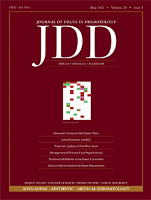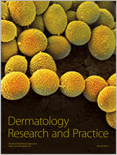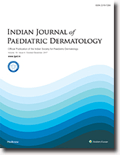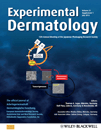
Journal of Drugs in Dermatology
Scope & Guideline
Innovating skin therapies for a healthier tomorrow.
Introduction
Aims and Scopes
- Clinical Dermatology Research:
The journal publishes studies related to clinical practices in dermatology, including novel treatments for various skin conditions, effectiveness of existing therapies, and patient outcomes. - Cosmetic Dermatology:
A significant focus on aesthetic treatments, including the use of fillers, botulinum toxin, and other cosmetic interventions, addressing both efficacy and safety. - Teledermatology and Healthcare Equity:
Research on the application of telemedicine in dermatology, particularly how it affects access to care for diverse populations and its implications on healthcare equity. - Innovative Drug Therapies:
The journal explores new pharmacological treatments and their mechanisms, including biologics and topical agents, with an emphasis on evidence-based practice. - Patient-Centered Approaches:
Studies highlighting patient preferences, treatment adherence, and the psychosocial aspects of dermatological conditions, aiming to improve overall patient care. - Skin of Color Research:
An increasing focus on dermatological issues and treatments specific to skin of color, including disparities in treatment outcomes and representation in clinical trials.
Trending and Emerging
- Personalized Medicine in Dermatology:
There is a growing emphasis on tailored treatment approaches that consider individual patient characteristics, particularly in the context of biologic therapies for conditions like psoriasis. - Impact of COVID-19 on Dermatology:
Research exploring the effects of the COVID-19 pandemic on dermatological practices, patient care, and outcomes has surged, reflecting the need for adaptation in clinical settings. - Integrative and Holistic Approaches:
The exploration of holistic and integrative methods in dermatology, including the use of nutraceuticals and alternative therapies, is increasingly highlighted. - Artificial Intelligence and Digital Health:
The application of AI and digital tools in dermatology for diagnostics, treatment planning, and patient management is emerging as a significant trend. - Focus on Health Disparities:
There is an increasing number of studies addressing health disparities in dermatology, particularly concerning skin of color, which is becoming a crucial area of research. - Telehealth Innovations:
The rise of telehealth in dermatology, including its effectiveness and patient satisfaction, is a trending topic as it becomes a standard practice in the field.
Declining or Waning
- Traditional Topical Treatments:
Research on conventional topical therapies, such as older formulations of retinoids and corticosteroids, seems to be less prevalent, possibly due to the rise of newer, more effective treatments. - Acne Treatment Focus:
The volume of studies solely dedicated to acne treatments, particularly those that do not explore innovative or combination therapies, appears to be waning as attention shifts to more complex skin conditions. - General Dermatology Reviews:
General review articles that summarize established dermatological practices are less frequent, indicating a move towards more specific, data-driven studies that provide new insights. - Surgical Dermatology Techniques:
Research focusing on traditional surgical techniques in dermatology, such as excisions or cryotherapy, is becoming less prominent as newer minimally invasive options gain traction. - Pediatric Dermatology:
The specific focus on pediatric dermatology topics appears to be declining, potentially overshadowed by broader adult dermatological concerns and treatments.
Similar Journals

JOURNAL DER DEUTSCHEN DERMATOLOGISCHEN GESELLSCHAFT
Connecting researchers and clinicians for skin health advancements.JOURNAL DER DEUTSCHEN DERMATOLOGISCHEN GESELLSCHAFT, published by Wiley, is a prominent periodical in the field of dermatology, recognized by its Q2 quartile ranking in the 2023 dermatology category. With a dedicated focus on advancing knowledge in dermatological science, the journal publishes rigorous peer-reviewed research that encompasses a range of topics including clinical studies, research methodologies, and innovative treatment practices in dermatology. Its impact is reflected in its Scopus ranking, where it stands at #48 out of 142 in the medicine dermatology category, placing it in the top 66th percentile. Although not an Open Access journal, it serves as a critical resource for researchers, clinicians, and students alike, facilitating the dissemination of high-quality research findings and fostering a deeper understanding of dermatological conditions and treatments. With years of convergence from 2003 to 2024, this journal remains a vital platform for scholarly dialogue and discovery in dermatology.

Annals of Dermatology
Pioneering insights into skin health and disease.Annals of Dermatology is a prestigious academic journal published by the Korean Dermatological Association, focusing on the latest research and advancements in the field of dermatology. With a commitment to advancing knowledge in skin health and disease, this journal serves as a vital resource for researchers, clinicians, and students working in dermatology and related disciplines. Since its inception in 1989, it has evolved to consolidate its position in the academic community, boasting a Q2 ranking in the 2023 Dermatology category and a Scopus rank of #87 out of 142, placing it in the 39th percentile. Although it operates under a subscription model, the journal's impact factor reflects its significance in advancing dermatological research, attracting innovative studies and reviews that shape clinical practice. With a publication history extending from 1989 to 1996 and then from 2008 to the present, Annals of Dermatology continues to be an essential publication for those devoted to improving skin health.

INTERNATIONAL JOURNAL OF DERMATOLOGY
Advancing dermatological science for a healthier tomorrow.The INTERNATIONAL JOURNAL OF DERMATOLOGY, published by WILEY, stands as a premier scholarly platform in the field of dermatology, with a notable impact factor that affirms its quality and renown. Established in 1963 and converging through to 2024, this journal is recognized as a Q1 category publication, ranking in the top 20% of journals within the dermatology field according to the Scopus ranking system, where it occupies the 28th position among 142 journals. This reflects its dedication to advancing the understanding and treatment of skin diseases, making it a vital resource for researchers, healthcare professionals, and medical students alike. Although it does not provide open access options, articles published in this journal cover a broad range of dermatological topics, ensuring that it serves as a comprehensive and authoritative source for cutting-edge research and clinical practices. With its rigorous peer-review process and commitment to high standards, the INTERNATIONAL JOURNAL OF DERMATOLOGY remains indispensable for those engaged in dermatological science and practice.

JOURNAL OF DERMATOLOGICAL TREATMENT
Exploring the forefront of skin health research.The JOURNAL OF DERMATOLOGICAL TREATMENT, published by TAYLOR & FRANCIS LTD, is a premier forum dedicated to advancing the field of dermatology through the dissemination of high-quality research. Since its inception in 1989, this journal has maintained a significant impact on the dermatological community, currently ranking in the top quartile (Q1) of the Dermatology category with an impressive Scopus ranking of #14 out of 142 journals, reflecting its reputation among peers and its contribution to the clinical and academic landscape. The journal shifted to Open Access in 2023, enhancing the accessibility of groundbreaking findings to researchers, clinicians, and students worldwide. With a commitment to publishing diverse articles, from innovative treatment modalities to comprehensive reviews, the JOURNAL OF DERMATOLOGICAL TREATMENT serves as an invaluable resource for professionals seeking to stay at the forefront of dermatological science in a rapidly evolving field.

Dermatology Research and Practice
Connecting researchers and practitioners for skin health advancement.Dermatology Research and Practice is a premier open access journal published by HINDAWI LTD, dedicated to advancing the field of dermatology since its establishment in 2009. With a respectable impact factor and a ranking of #42 out of 142 in the Scopus Medicine - Dermatology category, the journal stands in the 70th percentile, reflecting its influence and relevance in contemporary dermatological research. Based in Egypt, it provides a platform for groundbreaking studies that shape clinical practice and policy worldwide. The journal covers a wide range of topics within dermatology, including but not limited to clinical research, epidemiology, and patient care, making it an essential resource for researchers, healthcare professionals, and students seeking to enhance their understanding and contribute to the field. Emphasizing open access, Dermatology Research and Practice ensures that vital research findings are readily available to the global community, fostering collaboration and innovation in dermatology.

Turk Dermatoloji Dergisi-Turkish Journal of Dermatology
Shaping the landscape of dermatology with every issue.Turk Dermatoloji Dergisi-Turkish Journal of Dermatology, published by Wolters Kluwer Medknow Publications, is a prominent platform dedicated to advancing the field of dermatology in Turkey and beyond. With an ISSN of 1307-7635 and an E-ISSN of 1308-5255, this journal plays a vital role in disseminating contemporary research and clinical advancements within the domain. While it is positioned in the Q4 quartile of dermatology journals, its contributions are essential for academics, medical practitioners, and students averse to the latest trends and breakthroughs in skin health. The journal assures accessibility to a broad audience, fostering knowledge exchange, collaboration, and innovation. Given its unique perspective rooted in Turkish dermatological practices, the Turkish Journal of Dermatology serves as a significant resource for enhancing professional competence and driving forward the science of dermatology through its vivid discussions and case studies. For researchers seeking a dedicated venue to publish their work or for professionals eager to stay informed, this journal is an indispensable resource in the ever-evolving landscape of dermatology.

DERMATOLOGY
Pioneering research, transforming skin health.DERMATOLOGY, an esteemed journal published by KARGER, is a vital resource in the field of dermatological research and clinical practice. Established in 1893, with its comprehensive coverage extending to 2024, this journal has earned its place as a leading publication, holding a prestigious Q1 quartile ranking in Dermatology and ranking 15th out of 142 in the Scopus Medicine - Dermatology category, reflecting its 89th percentile standing within the discipline. The journal aims to disseminate innovative research findings, critical reviews, and clinical studies that advance the understanding of skin disorders and their treatments. While primarily available through institutional subscriptions, DERMATOLOGY remains committed to enhancing accessibility and fostering international collaboration among researchers, professionals, and students in the dermatological community. Its rigorous peer-review process guarantees the highest quality of published works, making it an essential reference for those dedicated to advancing dermatological science and improving patient care.

Indian Journal of Paediatric Dermatology
Exploring breakthroughs in paediatric dermatology.Indian Journal of Paediatric Dermatology (ISSN: 2319-7250; E-ISSN: 2319-7269), published by Wolters Kluwer Medknow Publications, stands as a pivotal resource in the specialized field of paediatric dermatology. As a peer-reviewed open access journal since 2013, it aims to disseminate cutting-edge research, clinical practices, and innovative developments that cater to the specific dermatological needs of children. The journal provides an essential forum for collaboration among researchers, clinicians, and students, facilitating the sharing of knowledge on a wide array of topics, including skin conditions unique to paediatric populations, treatment methodologies, and advancements in dermatological care. With a commitment to enhancing the understanding and treatment of paediatric skin diseases, this journal plays a critical role in shaping best practices and informing future research directions in a rapidly evolving field.

EXPERIMENTAL DERMATOLOGY
Exploring New Frontiers in DermatologyEXPERIMENTAL DERMATOLOGY, published by WILEY, is a leading journal in the fields of Biochemistry and Dermatology, with impressive rankings including Q1 status in both categories as of 2023. With its ISSN 0906-6705 and E-ISSN 1600-0625, the journal offers a reputable platform for disseminating cutting-edge research and insights into skin biology and related health issues. As a pivotal resource for professionals, researchers, and students alike, EXPERIMENTAL DERMATOLOGY includes a broad scope of topics, fostering a deeper understanding of dermatological conditions and enhancing new therapeutic strategies. The journal’s distinguished performance is highlighted by its Scopus rankings, which place it at the 91st percentile in Medicine-Dermatology and the 65th in Biochemistry. While not an open-access publication, the journal remains committed to ensuring the accessibility of crucial developments within the dermatological community worldwide, facilitating the advancement of both clinical practice and academic inquiry.

JOURNAL OF THE AMERICAN ACADEMY OF DERMATOLOGY
Unveiling the latest in dermatological science and therapy.JOURNAL OF THE AMERICAN ACADEMY OF DERMATOLOGY, published by Mosby-Elsevier, stands at the forefront of dermatological research and education. With an impressive impact factor and categorized as Q1 in Dermatology, this journal has established itself as a pivotal resource for healthcare professionals and researchers in the field. Since its inception in 1979, it has provided a platform for high-quality peer-reviewed articles, contributing significantly to advancements in dermatological science and practice through 2024. The journal commands an honorable position, ranking #8 out of 142 in the Scopus database's medicine dermatology category, placing it in the 94th percentile among its peers. Readers can access a wealth of cutting-edge studies, case reports, and reviews that address a broad spectrum of topics, from clinical dermatology to emerging therapies. In addition, the journal's commitment to excellence ensures it remains an essential tool for students, clinicians, and researchers dedicated to improving skin health and furthering knowledge in dermatology.